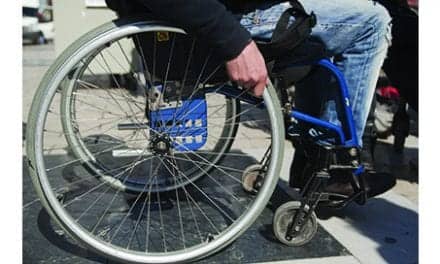.png) According to a recent news release, the University of Pittsburgh School of Medicine and UPMC was chosen to receive one of Popular Mechanics’ Breakthrough Awards of 2012 in recognition of a research project in which quadriplegic patient was able to move a robot arm with this thoughts. The release notes that the magazine honored both the trial’s participant Tim Hemmes, who sustained a spinal cord injury (SCI) in a 2004 motorcycle accident and the research team, led by Wei Wang, MD, PhD, assistant professor, Department of Physical Medicine and Rehabilitation (PM&R), Pitt School of Medicine. The research team and Hemmes were recognized during an October 4 conference and gala awards ceremony in New York City, NY.
According to a recent news release, the University of Pittsburgh School of Medicine and UPMC was chosen to receive one of Popular Mechanics’ Breakthrough Awards of 2012 in recognition of a research project in which quadriplegic patient was able to move a robot arm with this thoughts. The release notes that the magazine honored both the trial’s participant Tim Hemmes, who sustained a spinal cord injury (SCI) in a 2004 motorcycle accident and the research team, led by Wei Wang, MD, PhD, assistant professor, Department of Physical Medicine and Rehabilitation (PM&R), Pitt School of Medicine. The research team and Hemmes were recognized during an October 4 conference and gala awards ceremony in New York City, NY.
During the trial, researcher reportedly placed a grid of sensors on the surface of Hemmes’ brain and the wires necessary to connect with a computer were placed under the skin of his neck and chest. Alan Degenhart, doctoral candidate in PM&R and Pitt’s Department of Bioengineering, worked with a computer program in order to record neural signals from Hemmes’ brain while he imagined or observed an arm motion. Researchers explain that these patterns were used to translate Hemmes’ thoughts to guide the movement of a robot arm, developed by Johns Hopkins University’s Applied Physics Laboratory.
On the final day of the 30-day trial prior to the removal of the brain grid and wiring, researchers report that Hemmes was able to high-five Wang, demonstrating the ability to control the device in up/down motion, right/left, and in/out.
In an announcement from Popular Mechanics, James B. Meigs, editor-in-chief, articulates the publication’s excitement in recognizing the honorees, “…this year’s winners embody the creative spirit that the Breakthrough Awards were founded upon,” Meigs says.
Source(s): University of Pittsburgh School of Medicine, UPMC




